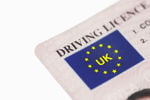Latest figures show that in England and Wales, the number of people killed or injured rose by more than 60% in the year to April 2004.
A total of 31 people were killed during the period, up from 20 the previous year, while there were more than 2,000 casualties, up by 700.
The results were revealed in a Parliamentary answer by Home Office Minister Hazel Blears and have prompted a call from the police complaints watchdog to improve training and assessment.
The Independent Police Complaints Commission (IPCC) said while it recognises police drivers have to speed in an emergency, they must not take ‘unacceptable risks’.
Chairman of IPCC Nick Hardwick said: ‘Training and risk assessments are the keys to reducing deaths and serious injuries involving police drivers.
‘Training has to be consistent across England and Wales and must follow the curriculum laid down by the Association of Chief Police Officers more than five years ago.
‘We all accept that in emergencies police officers have to speed and go through red lights but they must not take unacceptable risks, either for themselves or the public. Control rooms have to play a central role in dictating pursuits.
‘The IPCC will continue to manage or independently investigate the most serious collisions involving police driving. We are ensuring the lessons learned will benefit the police service.’
Earlier this year, drivers’ confidence in the Government’s anti-speeding campaign was undermined following a controversial court case in which a traffic officer was cleared of speeding and dangerous driving after ‘familiarising’ himself with his 3.2-litre Vauxhall Vectra at speeds of up to 159mph (Fleet NewsNet, May 26).
The Crown Prosecution Service (CPS) is currently appealing against the court’s decision.
A district judge said PC Mark Milton had not posed a threat to pedestrians or other motorists as the journey took place in the early hours of the morning.
















Login to comment
Comments
No comments have been made yet.